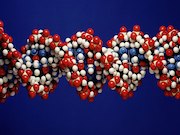Seen in carriers of deletion or duplication at 16p11.2, a common cause of autism spectrum disorder
THURSDAY, Dec. 28, 2017 (HealthDay News) — Neuroanatomic abnormalities are seen in cohorts at high risk for autism spectrum disorder (ASD), according to a study published in the January issue of Radiology.
Julia P. Owen, Ph.D., from the University of California in San Francisco, and colleagues identified developmental neuroradiologic findings in a large cohort of carriers of a deletion or duplication at 16p11.2, one of the most common genetic causes of ASD. Data were included for 79 carriers of a deletion at 16p11.2, 79 carriers of a duplication at 16p11.2, 64 unaffected family members, and 109 population control participants, all of whom underwent structural magnetic resonance imaging and completed cognitive and behavioral tests.
The researchers found that, compared with familial noncarriers and population control participants, the most prominent features for deletion carriers were dysmorphic and thicker corpora callosa and a greater likelihood of cerebellar tonsillar ectopia and Chiari I malformations. The most salient findings for duplication carriers compared with familial noncarriers and population controls were reciprocally thinner corpora callosa, decreased white matter volume, and increased ventricular volume. For deletion carriers, the presence of any imaging feature indicated worse daily living, communication, and social skills compared to those without any radiologic abnormalities. The presence of decreased white matter, callosal volume, and/or increased ventricle size was correlated with reduced full-scale and verbal IQ scores among duplication carriers.
“In two genetically related cohorts at high risk for ASD, reciprocal neuroanatomic abnormalities were found and determined to be associated with cognitive and behavioral impairments,” the authors write.
One author disclosed financial ties to the medical device industry.
Copyright © 2017 HealthDay. All rights reserved.








